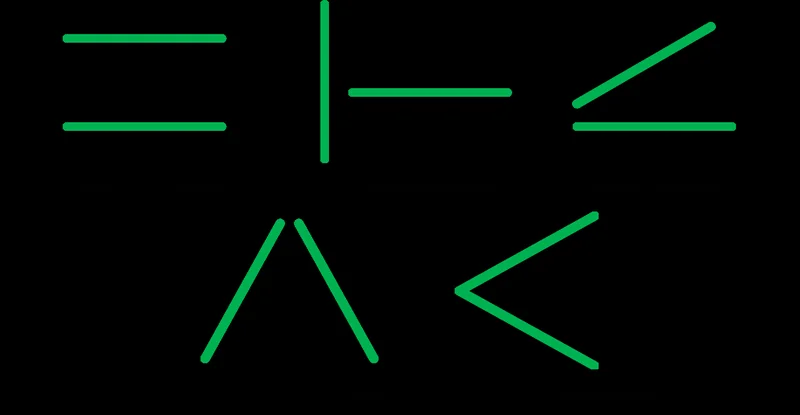The global financial system’s central nervous system, the Society for Worldwide Interbank Financial Telecommunication (SWIFT), has finally made its move. After years of blockchain "experiments," the consortium has confirmed it will build its new payment settlement platform on Linea, an Ethereum layer-2 network developed by Consensys.
The numbers are, as always, the place to start. SWIFT processes roughly $150 trillion in payments annually—to be more exact, that averages out to over $5 trillion every single day. For an entity of this scale to formally engage with public blockchain architecture is, on the surface, a monumental validation for the technology. Yet, a closer inspection of the strategy reveals a narrative that is less about disruption and more about institutional preservation. This isn't a leap into the decentralized future; it's a calculated maneuver to build a more efficient walled garden.
The announcement, soft-rolled by SWIFT CEO Javier Pérez-Tasso before being confirmed by Consensys CEO Joe Lubin, was met with a reported sense of relief from the banking sector. (Joe Lubin confirms SWIFT is using Linea to build its new payments system) Lubin characterized the sentiment as, “‘thank you for doing this.’ It’s about time to bring the two streams, DeFi and TradFi, together.”
But are they truly being brought together? Or is one stream simply being diverted to reinforce the banks of the other? The answer lies in the fundamental design philosophy SWIFT is pursuing.
The Architecture of Control
The core of this entire development pivots on a single, critical distinction: "neutral infrastructure" versus "native settlement." This isn't just technical jargon; it's the ideological fault line between the old world and the new.
Ripple’s XRP Ledger (XRPL) is the archetype of native settlement. Its entire model is predicated on using a native digital asset, XRP, as a bridge for liquidity. The asset is the rail. This design offers immense potential for speed and efficiency by eliminating the need for pre-funded nostro/vostro accounts, but it comes with a heavy payload of risk—namely, the volatility and regulatory ambiguity of the XRP token itself.
SWIFT, in collaboration with its member banks (JPMorgan Chase, Citi, and Bank of America, among others), is taking the diametrically opposite approach. Its Linea-based ledger is explicitly token-agnostic. Think of it this way: Ripple built a new kind of superhighway and mandated that every vehicle pay tolls with its proprietary currency. SWIFT is simply resurfacing the existing highway system with a new, more efficient pavement—blockchain—but allowing the same old vehicles, driven by the same licensed operators, to use it. The "vehicles" in this case would be tokenized deposits, central bank digital currencies (CBDCs), and regulated stablecoins issued and controlled by the banks themselves.
SWIFT isn't creating a new settlement asset; it's creating a set of rails for its members to move their own regulated, tokenized liabilities. Tom Zschach, SWIFT’s Chief Innovation Officer, was remarkably candid about the motivation: “institutions don’t want to live on a competitor’s rails.” This single statement cuts through all the marketing about innovation. The primary objective is to maintain sovereign control, insulating the banking system from the perceived risks and unpredictable governance of a crypto-native ecosystem.
The choice of Linea is tactically astute. As an Ethereum layer-2, it offers the underlying security of the world’s most established smart contract platform while leveraging zk-rollup technology to bundle transactions for higher throughput at a lower cost. With a total value locked of $2.27 billion, it’s a significant player, but it’s no titan. Its selection appears to be a pragmatic choice based on its zkEVM architecture, which emphasizes privacy and compatibility with Ethereum's developer tools—features crucial for institutions balancing innovation with stringent regulatory oversight.

A Battle Fought on Legal Grounds, Not Technical Ones
While the crypto community often frames these contests in terms of transactions per second and fee structures, SWIFT is astutely shifting the battle to a different field entirely: legal and regulatory compliance.
And this is the part of the analysis I find most revealing. SWIFT isn't just choosing a technology; it's choosing a battlefield. By centering the debate on "legal finality," they shift the conversation away from raw efficiency and decentralization—where a network like XRPL might have an edge—and onto regulatory capture, where SWIFT is the undisputed, 40-year incumbent.
Zschach made this explicit, stating, “Settlement is a legal construct, not a technical one. We need to align a blockchain’s confirmation model with legal finality.” This is SWIFT’s trump card. The organization understands that for a global bank, the moment a transaction is considered legally settled in a court of law is infinitely more important than the moment a block is confirmed on a distributed ledger.
By building a permissioned, token-agnostic system, SWIFT ensures that every transaction can be mapped directly onto existing legal frameworks. There is no ambiguity about the nature of the asset being moved—it’s a digital representation of a liability from a regulated institution. There are no questions about securities law classifications. This design preemptively solves the biggest headache for any bank’s general counsel.
This approach, however, comes at a cost. The primary innovation of crypto-native settlement—access to a global, 24/7, open pool of liquidity via a native asset—is completely stripped away. The SWIFT-Linea system will still be dependent on the liquidity that its member banks choose to provide. It may be faster and more programmable than the current messaging system, but it does not solve the foundational problem of fragmented liquidity that systems like XRPL were designed to address.
The question then becomes, what problem is this new system actually solving? It appears to be a solution for the banks, not for the broader market. It streamlines their operations, reduces reconciliation overhead, and gives them a modern toolkit for digital assets, all without forcing them to cede control or take on new, unfamiliar forms of risk. It’s an upgrade, not a revolution.
This Isn't Disruption; It's Containment
When all the data is synthesized, the picture becomes clear. SWIFT’s adoption of Linea is not an embrace of the crypto ethos; it is a strategic inoculation against it. The project is a masterclass in corporate defense, designed to absorb the technological benefits of blockchain while methodically excising the ideological components—decentralization, open access, and native settlement assets—that pose an existential threat to the existing financial hierarchy.
This new ledger will likely be a success on its own terms. It will make interbank transfers more efficient for the 30+ institutions piloting it. But to frame it as a direct competitor poised to "kill" a crypto-native solution like XRP is to fundamentally misunderstand the objective. They are not competing in the same sport. (Will SWIFT’s Linea Ledger Kill XRP’s Cross-Border Dream — Neutral Infrastructure vs. Native Settlement Explained)
Ripple is playing for the future of finance. SWIFT is playing to ensure that the future of finance looks remarkably similar to its present, just with a more efficient back-end. This is not the moment blockchain goes mainstream; it’s the moment the mainstream puts blockchain in a corporate headlock. The real question isn't whether this new system is better than XRP, but whether it's meaningfully better than the legacy system it's designed to replace. The preliminary data suggests it’s an incremental improvement, not a paradigm shift.

